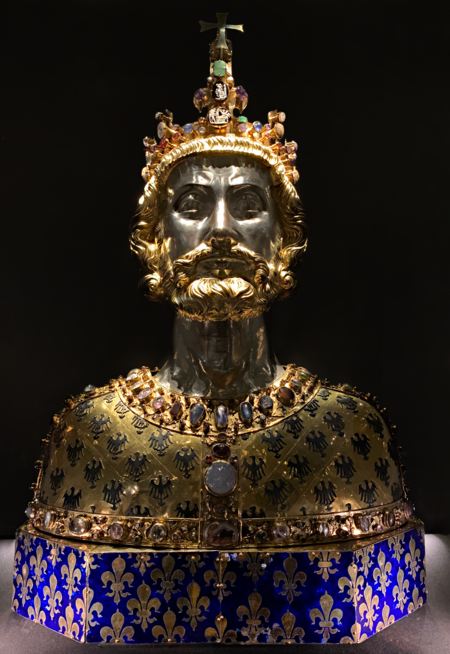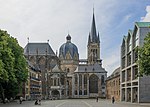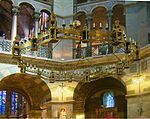Bust of Charlemagne
14th-century sculpturesAachen Cathedral TreasuryBusts in GermanyChristian reliquariesCultural depictions of Charlemagne ... and 3 more
Gothic sculpturesMedieval crownsSculptures of men

The Bust of Charlemagne (de: Karlsbüste) is a reliquary from around 1350 which contains the top part of Charlemagne's skull. The reliquary is part of the treasure kept in the Aachen Cathedral Treasury. Made in the Mosan region (the valley of the River Meuse), long a centre of high-quality metalwork, the bust is a masterpiece both of late Gothic metalwork and of figural sculpture. The Bust of Charlemagne, as a masterpiece of Mosan goldwork, initiated a height of silver-gilt naturalistic reliquary busts.
Excerpt from the Wikipedia article Bust of Charlemagne (License: CC BY-SA 3.0, Authors, Images).Bust of Charlemagne
Domhof, Aachen Burtscheid (Aachen-Mitte)
Geographical coordinates (GPS) Address Phone number Website Nearby Places Show on map
Geographical coordinates (GPS)
| Latitude | Longitude |
|---|---|
| N 50.77475 ° | E 6.0839222222222 ° |
Address
Aachener Dom
Domhof 1
52062 Aachen, Burtscheid (Aachen-Mitte)
North Rhine-Westphalia, Germany
Open on Google Maps









